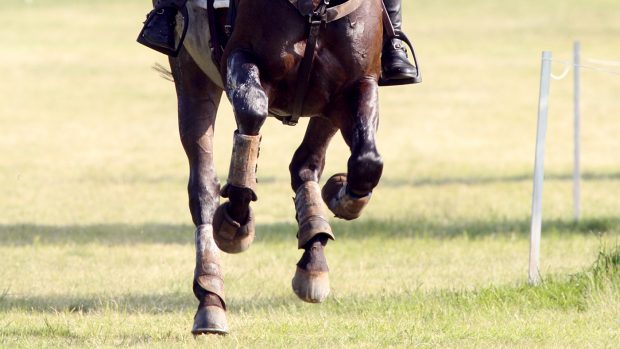Types of injury
Bruising and haematomas
These are very common following kicks over muscular regions such as the rump (gluteal muscles), thigh muscles (quadriceps), or forearms. The overlying skin is often undamaged, but blood vessels are ruptured by the hoof’s impact.
Bleeding into the surrounding tissue may be mild, forming bruises, or in some cases more severe, resulting in large fluid swellings under the skin called haematomas. Mild bruising can be treated with cold hosing and compresses, but large haematomas deserve veterinary attention.
Skin lacerations
Trauma from kicks often only causes small skin wounds. However, these should be carefully examined as they often lead to pockets under the skin where the connective tissue has been separated by the blow, leaving atunnel into deeper tissue for bacteria to travel along.
Small superficial wounds away from joints, which do not appear to be causing marked lameness, can be treated by poulticing, followed by twice-daily cleaning and application of a suitable wound ointment.
Deeper puncture-type wounds require veterinary attention, as the skin has been broken and bruised tissue is prone to infection. The wound will need flushing and the horse will require antibiotics and tetanus prophylaxis.
Large skin wounds may need stitching, and these must be seen straight away, as bacteria multiply rapidly and, after six hours, most wounds will be too infected to close.
Wounds that need stitching should be cleaned with saltwater (half a teaspoon of table salt into a litre of water) and bandaged to prevent contamination while waiting for the vet.
Infected or heavily contaminated wounds should not be stitched. Instead, they should be managed with antibiotics, bandaging and water-soluble wound ointments.
Kicks onto joints
Joints are particularly dangerous sites for a horse to sustain a kick. If the skin is broken there is a serious risk of joint-capsule penetration. Any puncture-type skin wound over a joint should receive veterinary care.
If infection gets into a joint, it will rapidly become septic. This is extremely serious and can lead to permanent lameness or even necessitate euthanasia.
Kicks onto bone
In many cases, the bone will just be bruised and will heal quickly, leaving only a splint-type bony swelling. These cases respond well to a week’s cold hosing and kaolin poulticing, combined with box rest.
Sometimes, however, the kick wound is deep or traumatic enough toaffect underlying bone, resulting in a ‘sequestrum’, a fragment of bone that has broken off with the initial impact or has become devitalized due to reduced blood supply as a result of infection.
The wound may heal initially, only to break open again. A chronic drainage tract will persist until the sequestrum is surgically removed.
Any kick wound which refuses to heal should be X-rayed to rule out bone chips, fractures or sequestra. Some kicks onto bone are so powerful they fracture the bone.
Many fractures can be repaired, though sadly some cannot, necessitating euthanasia.
Recognition of non-displaced ‘hairline’ fractures is essential for, as the horse gets sounder and starts to bear weight, the bone may suddenlygive way.
Any kick wound resulting in severe lameness deserves urgent veterinary attention.
Call the vet if:
- the wound is pouring or pumping blood
- the skin over a joint or tendon sheath has been penetrated
- the horse is lame
- a large haematoma has developed
- the wound is infected, highly contaminated or doesn’t show signs of healing
- your horse’s tetanus jab isn’t up-to-date
- the wound is deep or large enough to require stitching.
Alternative treatments
There are a number of alternative therapies that can be helpful with kick injuries and worth keeping in your first aid kit. Before using them, check with your vet that they won’t interfere with any other treatment your horse is receiving.
- Arnica: useful for treating bruises.
- Calendula lotion: used to flush out wounds, Calendula has antiseptic qualities and stimulates healing.
- Hypericum: eases pain – useful when an area is very painful but there’s not much damage.
- Hepar sulph: if a wound is infected and oozing pus, Hepar sulph will help stimulate healing.



